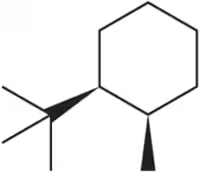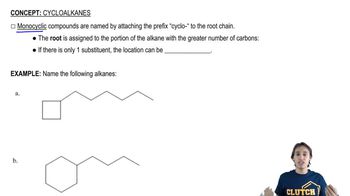Which of the following compounds show cis-trans isomerism? Draw the cis and trans isomers of the ones that do.
(a) CH3CH=CHCH3
(b) CH3C≡CCH3
(c) CH2=C(CH3)2

 Verified step by step guidance
Verified step by step guidance Verified video answer for a similar problem:
Verified video answer for a similar problem:



 4:28m
4:28mMaster How to name different types of double bonds or rings with a bite sized video explanation from Johnny
Start learning